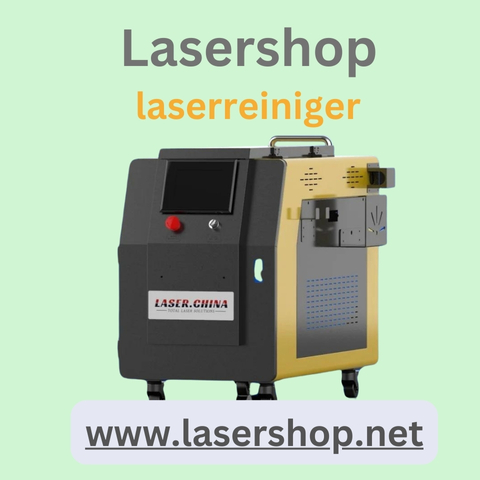Why Is a Laser Rust Cleaner the Top-Secret Weapon for Industries Fighting Deep Rust Buildup?
Rust is more than just a cosmetic issue. It’s a persistent, progressive threat that weakens structures, degrades machinery, and costs industries billions every year in repairs and replacements. Traditional methods—sandblasting, chemical solutions, and manual scrubbing—have long been the go-to rust removal strategies. But in today’s high-precision, safety-focused, and eco-conscious manufacturing environment, these old methods are simply not keeping up. This is where the laser rust cleaner becomes a game-changer.
A laser rust cleaner isn’t just another tool—it’s a disruptive innovation. It doesn’t rely on friction, chemicals, or abrasive force. Instead, it uses highly focused laser beams to vaporize rust from metal surfaces. This process is called laser ablation. It is non-contact, selective, and highly controlled. But what really sets it apart is not the science behind it—it’s how that science transforms industrial operations across countless sectors.
Let’s dive deep into how industries are using the laser rust cleaner, what makes it so effective, and why companies that ignore this tool may be left behind.
The Rise of Laser Rust Cleaning in Modern Industry
Industries today are under pressure like never before. Efficiency, safety, cost-effectiveness, and environmental responsibility are no longer optional—they are expected. In this environment, tools must do more than get the job done; they must improve systems, reduce downtime, and eliminate long-term maintenance issues.
The laser rust cleaner does exactly that.
It first gained popularity in aerospace and defense, where precision and surface integrity are absolutely critical. Removing rust or paint with traditional methods often caused surface damage, especially on expensive alloys. Laser technology, with its ability to clean without contact or abrasion, proved to be a breakthrough.
From there, it quickly spread to automotive, energy, shipbuilding, railway, and manufacturing industries. Its effectiveness in removing oxide layers, paint residues, and surface contaminants without harming the base material made it ideal for high-value and sensitive parts.
How a Laser Rust Cleaner Works
The principle is simple, yet powerful. A laser beam—usually from a pulsed fiber laser—is directed at the rusted surface. Rust, being a different material than the underlying metal, reacts differently to the laser’s energy. The laser heats and breaks apart the rust’s molecular structure, vaporizing or dislodging it in a controlled way.
Because the laser can be finely tuned, it can be set to target only the rust layer, leaving the base metal untouched. There’s no need for masking, solvents, or post-cleaning surface treatments. Everything is dry, clean, and instantaneous.
Applications Across Key Industries
1. Automotive & Restoration
In vehicle restoration and manufacturing, every surface matters. Laser rust cleaners are used to clean old parts, prep surfaces before welding, or restore antique vehicles without damaging the underlying metal. For classic car enthusiasts and high-performance auto shops, laser cleaning is a precision tool that saves time and money.
2. Aerospace
Aircraft structures are made from expensive materials like aluminum alloys, titanium, and composite components. Traditional rust removal methods can compromise surface strength or cause micro-damage. Laser rust cleaners offer a precise method for surface treatment without any chemical or mechanical stress.
3. Energy Sector
Power plants, refineries, and pipelines face constant exposure to corrosion due to weather, temperature, and chemical exposure. Laser rust cleaners are deployed to clean corroded valves, pipes, turbine components, and more—especially in hard-to-reach areas. Because lasers can be automated, they’re also used in robotic maintenance systems inside reactors or oil rigs.
4. Shipbuilding and Maritime Maintenance
Marine environments are the most hostile to metal. Salt, humidity, and exposure to water accelerate rust dramatically. Ships, containers, port equipment, and offshore structures all require frequent rust removal. The laser rust cleaner performs this without abrasive blasting, allowing maintenance even on sensitive or painted components.
5. Railway Industry
Rail cars, train engines, and tracks need periodic rust removal, especially for surface inspections, repainting, or welding prep. Laser rust cleaners remove rust precisely, reducing downtime and ensuring consistent surface preparation.
Environmental and Safety Impacts
Industries are facing tighter regulations on emissions, chemical use, and workplace safety. The laser rust cleaner addresses these concerns head-on.
- No Chemicals: Eliminates toxic rust removers, degreasers, and acidic solvents.
- No Dust Clouds: Unlike sandblasting, laser cleaning produces minimal airborne particulates.
- No Secondary Waste: There’s no residue or wastewater to dispose of—only rust particles, which can be vacuumed up.
- Silent and Safe: While powerful, laser cleaners produce low noise levels and are safer for operators when handled with the correct protective gear and safety enclosures.
This means companies can stay compliant while improving worker safety and reducing environmental impact.
Return on Investment and Operational Efficiency
For many, the upfront cost of a laser rust cleaner can seem high. But when viewed over time, the numbers tell a different story. Here’s how the investment pays off:
- Reduced Labor Costs: Laser systems are automated or semi-automated, cutting down manual work hours.
- Less Downtime: Cleaning is faster and more precise, meaning equipment returns to operation sooner.
- Lower Maintenance Costs: Non-abrasive methods prevent surface wear, extending equipment lifespan.
- No Consumables: Unlike sandblasting or chemical cleaning, there are no recurring material costs.
Over time, what you save in labor, maintenance, and consumables far outweighs the initial machine cost.
Technological Advancements
The laser rust cleaner is evolving fast. Newer systems now come with:
- Handheld Units for mobile cleaning jobs.
- Integrated AI Systems for auto-adjusting laser parameters based on material type.
- Robot Integration for cleaning in confined or dangerous environments.
- Touchscreen Interfaces and Wi-Fi connectivity for smart operations.
These updates make the cleaner more user-friendly, more precise, and even safer.
Training and Operation
Using a laser rust cleaner requires basic training, but modern systems are built to be operator-friendly. Most manufacturers offer setup support, training, and manuals. Operators learn:
- Setting correct laser parameters
- Adjusting beam focus and coverage area
- Maintaining laser optics
- Following safety protocols (eye protection, ventilation)
A few days of training is typically enough for an experienced technician to operate the system effectively.
Regulatory Compliance and Certification
In regulated industries like aerospace and nuclear energy, equipment and processes must meet strict standards. Fortunately, laser rust cleaners are already certified or certifiable under many global standards:
- ISO surface preparation standards
- Environmental compliance (RoHS, REACH)
- Occupational health and safety guidelines
This makes them a ready-fit for industries where regulatory compliance is mandatory.
Final Thoughts
The laser rust cleaner isn’t just another industrial tool—it’s a transformation in how we approach surface treatment. Its ability to clean rust and contaminants without damaging the base material, without using chemicals, and without producing waste makes it uniquely suited for modern industrial demands.
In a world where productivity, precision, and sustainability are critical, the industries embracing this technology are staying ahead of the curve. Whether in aerospace, automotive, energy, or marine, laser rust cleaning isn’t the future—it’s the new standard.
If your business still relies on outdated methods for rust removal, it might be time to rethink your strategy. Because while rust is inevitable, falling behind doesn’t have to be.













